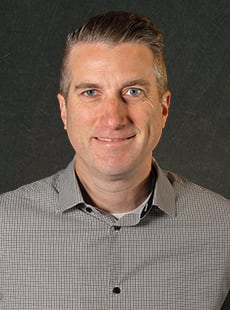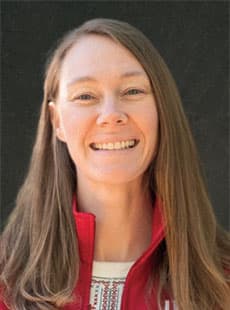Themepark
Balance is essential to the earth. Chemical cycles keep the amount of elements on the earth in a perfect balance.
Oxygen Cycle
The amount of oxygen in and around the earth is fixed. But this oxygen is fed again and again through the world's living systems in a never-ending circle called the oxygen cycle. Our needs are just part of this cycle. The cycle involves a continual exchange of gases between the air and animals and plants. In a process called respiration, animals and plants take oxygen from air and give back carbon dioxide. In a process called photosynthesis, plants take carbon dioxide from air and water and give back oxygen. Respiration and photosynthesis are effectively opposite processes. Respiration is an oxidation reaction, which takes oxygen from the air or from water. Photosynthesis is a reduction reaction. It adds oxygen gas to the air. Enormous quantities of oxygen are taken in by plants and animals every day, and huge quantities of oxygen are returned to the air by plants. These amount exactly balance so that overall the amount of oxygen in the air stays the same.
Carbon Cycle
Carbon is essential for the chemical processes that support life. It plays such an important role in life that sometimes we say that life is "carbon-based". But there is only a limited amount of carbon on the earth. So carbon is constantly cycling around the earth, turning up in a lot of different forms and places. The reactions that move carbon around make up a giant web called the carbon cycle.
Plants get carbon by taking carbon dioxide from the air. They use the carbon dioxide and the energy from sunlight to make food. Animals get their carbon by eating those plants or by eating animals that have eaten those plants. When organisms breathe, they take oxygen from the air. During respiration, the oxygen reacts with food to provide energy. Respiration produces carbon dioxide which is released to the air.
Volcanic eruptions are a source of carbon. When a volcano erupts, it releases huge amounts of carbon dioxide. But remember--the earth needs it elements to stay in balance. So the effect of volcanoes is balanced by weathering which is a chemical reaction between rainwater and rocks that absorbs carbon dioxide from the air to create rock carbonate minerals. Left to themselves, these natural processes are in perfect balance. But human activities can disturb the cycle and increase the amount of carbon dioxide in the atmosphere. This could cause problems in the future because carbon dioxide is vital for controlling the world's climate.
Nitrogen Cycle
Nitrogen atoms are constantly moving in a giant circle from the air, through the soil, into the bodies of plants and animals, and eventually back to the air. This whole process is called the nitrogen cycle. All living things need nitrogen to develop and grow. Even though the earth's atmosphere is made up of 78% nitrogen, plants and animals cannot use it in this form because the nitrogen atoms are too firmly bound together in molecules. So plants must draw their nitrogen from nitrogen compounds dissolved in the soil, and animals get their nitrogen by eating plants or by eating other animals that eat plants.
The nitrogen gets into the soil in a couple of different ways. A small quantity of the nitrogen found the soil by way of lightning. Lightning changes atmospheric nitrogen into nitrogen dioxide which is soluble in water. The nitrogen oxides dissolve in rainwater to form nitric acid which is absorbed by soil. The rest of the nitrogen in soil comes from bacteria. Bacteria are the only living things capable of getting nitrogen directly from the air. This is called "fixing". The process is started by certain kinds of bacteria in the soil that can extract nitrogen from the air. Then other bacteria convert the nitrogen into nitrogen compounds called nitrates, This process is called nitrification. Plants absorb the nitrates and turn them into more complex nitrogen compounds. Bacteria also help return nitrogen to the air. Bacteria in the soil decompose animal waste and the remains of dead animals and plants and produce ammonia. Nitrifying bacteria turn the ammonia into nitrates. Other bacteria, called denitrifying bacteria, convert some of the nitrates back into nitrogen gas, which is released into the air. All these different steps form a massive cycle. The effect is that, over time, bacteria in the soil return almost the same amount of nitrogen to the air as other bacteria take from the air. This keeps the nitrogen content of the earth and its atmosphere in a perfect balance.
Unfortunately, humans are interfering with the natural balance when they overuse artificially produced nitrates as agricultural fertilizers. Before these nitrates can be converted into atmospheric nitrogen, they are often carried off from the soil by rain or irrigation. These dissolved nitrates are carried to streams and rivers and even seep down to groundwater. In some parts of the world, water for humans and animals contains such high concentrations of nitrates that it is unsafe for consumption. These excessive amount of nitrates, when they reach rivers and lakes, cause too much algae to grow. This over-abundance of algae uses up too much of the oxygen in the water. When oxygen levels fall, other forms of life in the water die off.
Sample some of the following activities to learn more about chemical cycles.
Places To Go ![]() People
To See
People
To See ![]() Things To Do
Things To Do ![]() Teacher
Resources
Teacher
Resources ![]() Bibliography
Bibliography
The following are places to go (some real and some virtual) to find out about chemical cycles.
Visit the periodic table on the web.
Visit this interactive periodic table with element scarcity (SRI), discovery dates, melting and boiling points, group, block and period information.
Visit Reeko's Mad Scientist Lab. It's a source of science experiments for parents, teachers, and students. Protective goggles are required.
Travel to worldwide volcanoes to learn about the carbon cycle. Volcanic eruptions emit huge amounts of carbon dioxide into the atmosphere. These emissions are balanced by a chemical reaction between rainwater and rocks. The rocks absorb carbon dioxide to create rock carbonate minerals.
Visit with the Chemical of the Week.
Read what this ecologist has to say about how human activities impact critical global cycles.
Get an overview of how atoms are recycled through Earth's ecosystems via biochemical cycles.
Here you will find free games and activities to help you learn about the cycles of Earth.
Find out where carbon fits in the periodic table and how it is essential for life on earth.
Nitrogen is tricky. Learn more about it. All living things need nitrogen to survive.
Click your way through the periodic table. Is the symbol for carbon C, Ca, or Co?
Learn more about eutrophication. Eutrophication is water/lake pollution caused by excessive nutrients such as nitrogen. It's what happens when humans interfere with the nitrogen cycle.
Learn about the exchange of carbon between the atmosphere and vegetation and between the oceans and the atmosphere.
There are four processes involved in the cycling of nitrogen. Learn more about nitrogen fixation, decay, nitrification, and denitrification.
Find out how animal waste and overuse of chemical fertilizers interfere with the nitrogen cycle.
Although about 78% of the earth's atmosphere is composed of nitrogen, it cannot be used directly by most organisms. Learn about the process that makes nitrogen available to sustain plant and animal life.
Water cycle, oxygen cycle, nitrogen cycle, carbon cycle—find out how these necessary cycles are essential for all processes of life.
Have some fun with this interactive periodic table.
According to this site, "Photosynthesis is the beginning of the amazing journey of energy and the basic materials of life." Find out what this means in terms of the oxygen cycle.
Find out about the Greenhouse Effect. Humans interfering with the carbon cycle are what cause it.
Resources for teaching about biochemical cycles.
A series of interdisciplinary, problem-based learning (PBL) modules for high school students.
The Windows to the Universe website is a richly interlinked ecosystem for learning about the Earth and Space sciences for use by the general public, students, and teachers.
Geography4Kids.com! The web site that teaches physical geography and earth science basics to everyone!
- Blashfield, Jean F. Nitrogen. Austin, Tex.: Raintree Steck-Vaughn, 1999.
- Blashfield, Jean F. Oxygen. Austin, Tex.: Raintree Steck-Vaughn, 1999.
- Farndon, John. Nitrogen. New York: Benchmark Books, c1999.
- Farndon, John. Oxygen. New York: Benchmark Books, c1999.
- Fitzgerald, Karen. The Story of Nitrogen. New York: Franklin Watts, c1997.
- Fitzgerald, Karen. The Story of Oxygen. New York: F. Watts, c1996.
- Milne, Lorus Johnson. Nature's Great Carbon Cycle. New York: Atheneum, c1983.
- Sparrow, Giles. Carbon. New York: Benchmark Books, 1999.


 UTAH EDUCATION NETWORK
UTAH EDUCATION NETWORK

 Justin
Justin Braxton
Braxton Dani
Dani Kayla
Kayla Katie
Katie Lora
Lora Rob
Rob Val
Val

